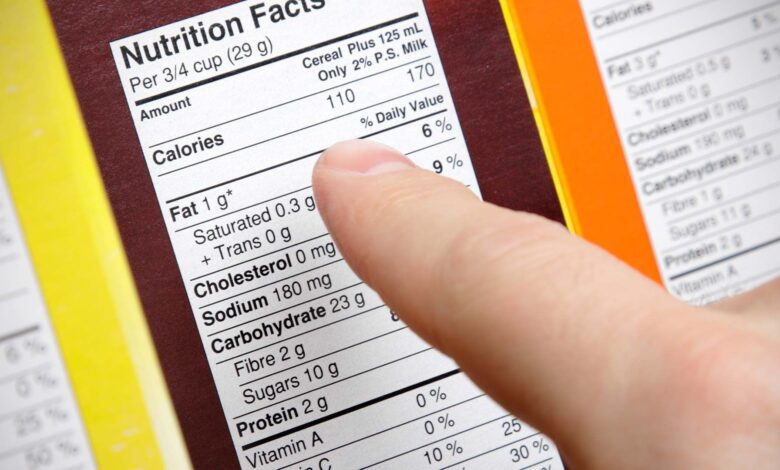How to Read Nutrition Labels Correctly: A Complete Guide

Understanding nutrition labels is crucial for making informed food choices. With so many processed foods and packaged items in the market today, knowing how to read nutrition labels correctly can help you maintain a healthy diet and avoid unnecessary additives or excess calories. This comprehensive guide will break down nutrition labels and provide tips on how to interpret the information effectively.
What is a Nutrition Label?
A nutrition label is a standardized panel found on food packaging that provides information about the nutritional content of a product. The purpose of this label is to help consumers make healthier choices by presenting details about the calorie count, macronutrients (carbohydrates, proteins, and fats), micronutrients (vitamins and minerals), ingredients, and more. Nutrition labels vary by country, but in most places, they follow a similar format that is regulated by health authorities like the FDA (Food and Drug Administration) in the United States or EFSA (European Food Safety Authority) in the European Union.
The Key Components of a Nutrition Label
When you first look at a nutrition label, it might seem overwhelming due to the abundance of information provided. However, breaking it down into its essential parts makes it easier to navigate.
1. Serving Size
The serving size is typically listed at the top of the nutrition label. This is a crucial piece of information because the rest of the nutritional information is based on this specific serving size. Serving sizes can be presented in different units, such as cups, ounces, or grams. It’s important to note that people often consume more than one serving of a product, so be sure to multiply the values by the number of servings you are eating.
For example, if a cereal box lists a serving size of 30g, but you consume 60g, you’ll need to double the nutritional values to account for the extra serving.
2. Calories
Calories indicate how much energy you will get from consuming one serving of the product. If you’re trying to maintain or lose weight, keeping track of calories is essential. However, it’s also important to focus on the quality of the calories you’re consuming, not just the quantity. Healthy, nutrient-dense foods tend to provide a higher amount of vitamins, minerals, and fiber in relation to their calorie content.
3. Macronutrients: Carbohydrates, Proteins, and Fats
Next on the label, you’ll see the breakdown of macronutrients, which include carbohydrates, proteins, and fats. These are the primary nutrients that provide energy to the body, and understanding their amounts can help you make balanced dietary choices.
- Carbohydrates: Carbohydrates provide the body with quick energy. The label typically shows total carbs, which include dietary fiber and sugars. Fiber is a type of carbohydrate that the body cannot digest, but it plays an important role in digestive health, so look for products high in fiber.
- Proteins: Protein is vital for muscle growth, repair, and overall body function. The amount of protein you need varies based on factors like age, sex, and activity level. For most adults, consuming 0.8 grams of protein per kilogram of body weight per day is a good baseline.
- Fats: Fat is an essential nutrient, but it’s important to consume healthy fats, such as monounsaturated and polyunsaturated fats, while limiting saturated and trans fats. Trans fats are particularly harmful to heart health and should be avoided as much as possible.
4. Micronutrients: Vitamins and Minerals
Micronutrients are the vitamins and minerals that are essential for various body functions but are needed in smaller amounts than macronutrients. Look for the percent daily value (%DV) for vitamins and minerals such as Vitamin A, Vitamin C, Calcium, and Iron.
The %DV tells you how much a nutrient in a serving of food contributes to your daily diet. For example, if the label indicates that a food contains 20% of your daily calcium needs, you will get 20% of the calcium you need for the day by consuming one serving of that food.
5. % Daily Value (%DV)
The %DV helps you understand how much a nutrient in a single serving of food contributes to your total daily diet. The %DV is based on a daily intake of 2,000 calories, which is the general guideline used for nutrition labeling. However, your individual needs may be higher or lower depending on factors like age, sex, and physical activity level.
- 5% DV or less is considered low for that nutrient.
- 20% DV or more is considered high for that nutrient.
This feature makes it easier to compare different products and quickly determine whether a product is a good source of a particular nutrient.
6. Ingredients List
The ingredients list provides a detailed breakdown of everything that is included in the product. Ingredients are listed in descending order by weight, meaning the ingredient that makes up the largest portion of the product is listed first. Pay attention to the ingredients that are hard to pronounce or those that you don’t recognize—these may be additives, preservatives, or artificial ingredients.
For those with food allergies or intolerances, checking the ingredients list is particularly important. Many products may also highlight common allergens such as dairy, gluten, or nuts, so you can avoid them if necessary.
7. Added Sugars
A relatively recent addition to nutrition labels is the listing of “added sugars.” This category helps differentiate between natural sugars found in fruits and dairy and sugars that have been added during manufacturing. High consumption of added sugars has been linked to several health issues, such as obesity, type 2 diabetes, and heart disease.
How to Use Nutrition Labels Effectively
Now that you understand the key components of a nutrition label, here are a few tips to make the most of the information:
1. Check Serving Size and Adjust for Portions
As mentioned earlier, the serving size is the foundation of the nutritional information on the label. Make sure to check the serving size to understand the portion you’re consuming. If you eat more than one serving, multiply the values by the number of servings you consume.
2. Look Beyond Calories
While calorie count is important, it’s essential to consider the nutritional quality of the food you’re eating. A product that’s low in calories may be high in added sugars or unhealthy fats, making it a poor choice for long-term health. Opt for foods with good amounts of fiber, healthy fats, and protein.
3. Aim for Balanced Macros
Try to balance the intake of carbohydrates, proteins, and fats in your diet. Each of these macronutrients plays a unique role in your body. Ensure that you’re eating a variety of foods to get an adequate supply of each.
4. Watch for Hidden Sugars and Sodium
Added sugars and excess sodium can sneak into many processed foods, even those that seem healthy. Look out for products with high levels of added sugars and sodium, as they can contribute to health problems like hypertension, diabetes, and heart disease.
5. Understand the %DV for Nutrients
The %DV is an excellent tool to quickly understand whether a food is high or low in specific nutrients. Aim for products with higher %DV in essential nutrients like fiber, vitamins, and minerals, while keeping an eye on those that are high in saturated fat, sodium, or added sugars.
6. Use the Ingredients List to Avoid Unwanted Additives
If you’re aiming for a whole-food diet or avoiding certain ingredients, the ingredients list is your best friend. Keep an eye out for artificial colors, preservatives, or unfamiliar chemicals that may not contribute positively to your health.
Conclusion
Reading nutrition labels correctly can be a game-changer for making informed dietary choices. By understanding the components of a nutrition label—serving size, calories, macronutrients, micronutrients, and ingredients—you can navigate your way through the overwhelming variety of foods on the market. Remember to check the serving size, focus on the quality of nutrients, and avoid excessive added sugars and unhealthy fats. With these tips in mind, you’ll be well-equipped to choose healthier foods and achieve your nutritional goals.



